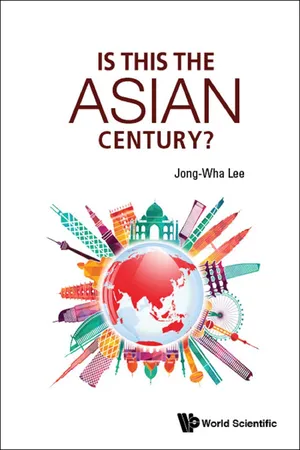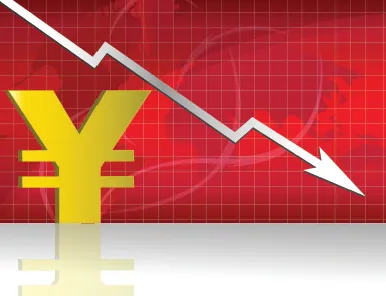![]()
Part 1
Growth and Structural Adjustment
Safeguarding Asia’s Growth*
Source: Patrick Foto / Shutterstock.com.
Emerging Asian countries should be proud of their economic resilience. Despite a global economy plagued by weak growth, persistently high unemployment, and heavy debt loads, the region’s emerging and developing economies grew at an average annual rate of 6.8% from 2000–2010, propping up global output and buttressing recovery efforts.
The region’s success has been underpinned by dynamic growth in China and India, which account for almost 60% of the continent’s total GDP in purchasing power parity terms. Furthermore, economic-policy changes and structural reforms that were enacted in the wake of the 1997–1998 Asian financial crisis significantly reduced the region’s vulnerability to financial shocks over the past decade.
But Asia cannot be complacent: financial systems remain fragile; economies are burdened with high fiscal and current-account deficits; and Asia remains too heavily dependent on North American and European export markets, increasing its vulnerability to external shocks.
Moreover, if conditions in the eurozone continue to deteriorate, Asia could be more severely affected. Already, spillover effects from trade and financial transmission channels are beginning to take their toll: China’s GDP growth rate in the second quarter of 2012 averaged 7.6%, reflecting a significant slowdown, and India’s growth rate is expected to decline to roughly 6% this year.
China’s potentially strong domestic-demand base and ample room for policy maneuvers can help it to avoid a hard landing. It has already aggressively loosened monetary policy, and it can employ further fiscal stimulus. But policy mismanagement and structural weaknesses in the financial sector and local governments could undermine efforts to safeguard growth.
Meanwhile, India, constrained by a high fiscal deficit and persistent inflationary pressure, has less scope for expansionary policies and faces significant challenges in pursuing credible structural reform.
This has serious implications for the rest of Asia. Over the last three decades, increased economic and trade integration has bolstered the region’s growth. For example, segmented production for global supply chains has stimulated trade in intermediate goods and promoted foreign direct investment. Now, however, closer economic integration means that sluggish growth in China and India will reduce job opportunities and slow the rate of poverty reduction throughout the region.
Faced with weak demand in advanced countries, Asian economies are working to rebalance their sources of growth by shifting toward domestic and regional markets. As a result, growth in intra-regional trade has outpaced overall trade growth, with intra-Asian trade now accounting for more than half of the continent’s total trade turnover.
But China’s established role as the assembly hub for the region’s production-sharing networks means that it is becoming a source of autonomous shocks — with a large and persistent impact on business-cycle fluctuations.
So, what policies must emerging Asian economies pursue to reduce their vulnerability to regional and global volatility?
The most immediate challenge is to safeguard the financial system’s stability against external shocks. Policy reform should aim to promote market transparency, improve risk management, and strengthen effective supervision and regulations.
Second, emerging countries must develop more effective macroeconomic frameworks, including better macro-prudential regulation and a broader monetary-policy framework that takes into account asset prices and financial-market stability. A wide range of official measures could be employed to support domestic demand while protecting medium-term fiscal sustainability. And, to address volatile capital flows, countries should increase exchange-rate flexibility, maintain adequate international reserves, and implement carefully designed capital controls.
Third, emerging economies must further rebalance their sources of growth. Reducing dependence on external demand — for example, by promoting private-sector investment and encouraging household expenditure — is crucial. Supply-side policies that promote small and medium-size enterprises and service industries accommodating domestic demand are also critical to ensuring more inclusive and sustainable growth.
Finally, enhanced regional and global financial cooperation — including closer policy coordination at the G-20 and International Monetary Fund — would help countries to respond more effectively to shocks and crises. A key regional initiative is the $240 billion multilateral reserve pool of the ASEAN+3 (the Association of Southeast Asian Nations plus China, Japan, and South Korea), which can provide short-term liquidity to members when needed. Institutional arrangements in regional liquidity provision and economic surveillance must be enhanced.
Asians need not be pessimistic; the perfect storm of a hard landing in China, a double-dip recession in the United States, and a collapse of the eurozone is unlikely. But they cannot rule out the downside risk of a synchronized global downturn. Only with preemptive policies designed to manage risk better can emerging Asian countries protect economic growth from the threat of current and future crises.
Abenomics and Asia*
Source: alexmillos / Shutterstock.com.
Japanese Prime Minister Shinzo Abe’s economic agenda — dubbed “Abenomics” — seems to be working for his country. Expansionary monetary policy is expected to inject liquidity into the Japanese economy until inflation hits the Bank of Japan’s 2% target, while expansionary fiscal policy is expected to continue until economic recovery takes hold.
As a result, consumer and investor confidence is returning. The Japanese stock market has soared more than 40% since November of last year, when it became clear that Abe would form the next government, and exports and growth are also picking up. With a large output gap and low inflationary pressure, expansionary policies show great potential for reviving economic activity.
But other countries — including neighboring Asian economies — fear that Japan is devaluing the yen to bolster exports and growth at their expense. Some have accused Japan of fueling a global “currency war.” Anticipation of aggressive monetary expansion has sharply weakened the yen, which has fallen by almost 20% against the dollar in just over four months.
Of course, Japan’s escape from its 15-year deflationary trap and two decades of economic stagnation would be good for the world. Japan remains the world’s third-largest economy, the fourth-largest trader, and the third-largest export market for neighboring China and South Korea, which thus stand to benefit if “Abenomics” revitalizes Japanese domestic demand. More broadly, given Europe’s slide into recession and only a slow rise in world trade volume, renewed growth and stronger import demand in Japan would support global recovery.
The question now is whether Abenomics can achieve its goals without destabilizing the world economy, especially neighboring Asian economies. Doing so requires Japanese policymakers to focus on more sustainable growth while averting a vicious cycle of competitive devaluation and protectionism with Japan’s trade partners. In particular, expansionary monetary and fiscal policies — which are helpful in the short term — must be accompanied by fundamental structural reforms.
Japan’s deflation and economic stagnation over the last two decades stemmed largely from a dysfunctional financial system and a lack of private demand. The collapse of asset bubbles in the 1990’s left Japan’s financial system and private sector saddled with a huge debt overhang. Recovery began only after the balance-sheet weaknesses in the financial, household, and corporate sectors were addressed. Sustainable growth requires sustained private-sector demand.
Monetary easing and fiscal stimulus, combined with structural measures to restore private firms to financial health, would stimulate household expenditure and business investment. Indeed, the impact of real exchange-rate depreciation on growth is likely to be short-lived unless increased corporate profits in the export sector lead to higher household consumption and investment. And yet risks to financial and fiscal stability could arise if higher inflation and currency depreciation were to spoil investors’ appetite for Japanese government bonds, thereby pushing up nominal interest rates.
That is why the success of “Abenomics” hinges not on the short-term stimulus provided by aggressive monetary expansion and fiscal policies, but on a program of structural reform that increases competition and innovation, and that combats the adverse effects of an aging population.
Japan, of course, is not alone in using exchange-rate policies to keep exports competitive. Many emerging economies’ authorities intervene in currency markets to prevent exchange-rate appreciation and a loss of export competitiveness. But if Japan starts to intervene directly in global currency markets to ensure a weaker yen, neighboring competitors will respond in kind. The danger of a currency war and protectionism should not be underestimated.
In South Korea, the government and business leaders worry that a stronger won, which recently rose to its highest level against the yen since August 2011, will hurt key export sectors, including automobiles, machinery, and electronics. One report by a Korean research institute shows that the Korean economy will slip into recession if the yen-dollar exchange rate nears 118, its average level back in 2007.
Moreover, unlimited quantitative easing by the Bank of Japan, the Federal Reserve, and the European Central Bank also increases the risk of volatile capital flows and asset bubbles in Asian emerging economies. Chinese policymakers have raised serious concerns about the growing risks of inflation and property bubbles.
This delicate situation could escalate into further currency intervention, trade protectionism, and capital controls. Beggar-thy-neighbor policies could lower total trade volume — a zero-sum game from which no one would benefit. After all, Japanese exports rely on emerging and developing markets, with East Asia alone accounting for nearly half of Japan’s foreign sales.
The regional economy would benefit from closer coordination of exchange-rate and monetary policies. Mechanisms like the G-20 and ASEAN+3 (ASEAN, with China, Japan, and South Korea) should be used more actively for policy dialogue and surveillance. East Asian economies could then, over time, cooperate to enhance regional exchange-rate stability, thereby creating a more conducive environment for intra-regional trade.
Japan’s economy is moving at last, which bodes well for Asia and the world. But, despite its new vigor, the benefits of recovery could prove to be short-lived unless a sustainable and cooperative growth path is found.
Asia’s Rebalancing Act*
Source: Image Team / Shutterstock.com.
Rapid economic growth in China undoubtedly benefits the rest of Asia. Indeed, strong Chinese demand has supported its trading partners’ export-led growth for much of the past three decades. But now, faced with a slowdown in China and significant downside risks there, the rest of Asia must abandon over-reliance on export-oriented development strategies and strive to ensure stable and sustainable growth domestically and regionally.
China’s vulnerabilities and risks — stemming from property bubbles, shadow banking, and local-government debt — have triggered concerns about a crisis not only there, but also in neighboring Asian countries. Some, indeed, now predict a Chinese banking or fiscal disaster; others predict long-term stagnation equivalent to Japan’s lost decades.
These “hard landing” scenarios are extreme. But the road ahead is bumpy and uncertain. No one can guarantee that Prime Minister Li Keqiang’s attempts to achieve deleveraging and structural reform will succeed. Moreover, external shocks, policy mistakes, and political instability could disrupt even the best-laid plans.
In any case, China’s stellar growth record cannot be sustained. Even if it manages a “soft landing,” annual output growth will slow to 5–6% in the coming decades. Standard growth theory predicts “convergence” of per capita GDP: a fast-growing country will eventually encounter difficulty maintaining high rates of labor mobilization, capital accumulation, and techn...



